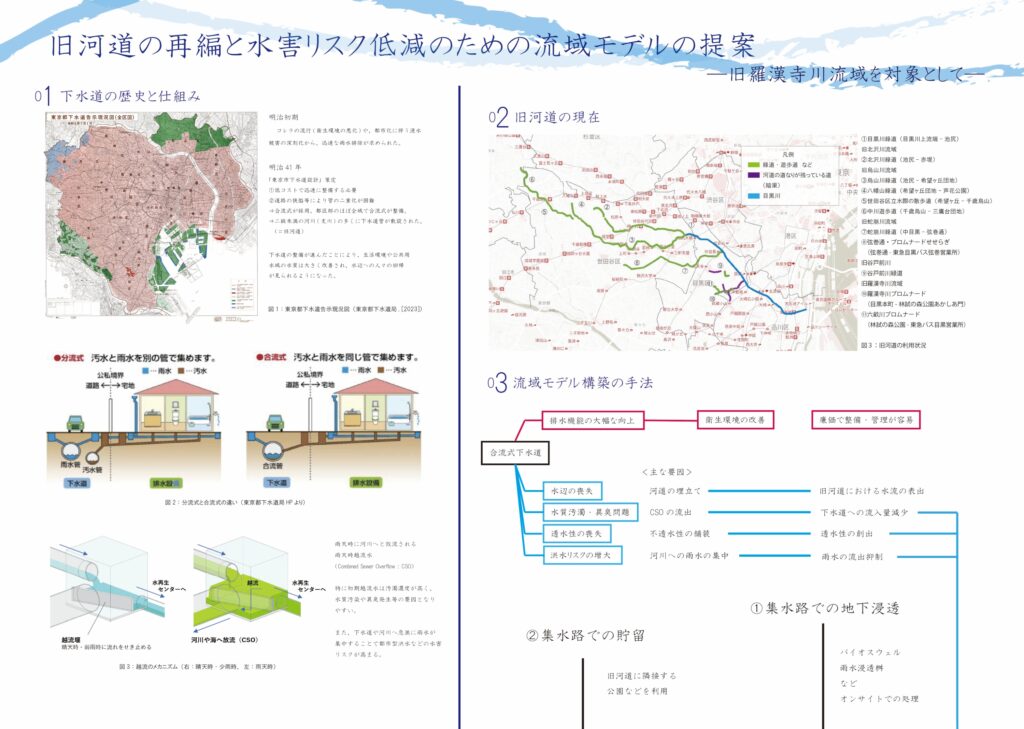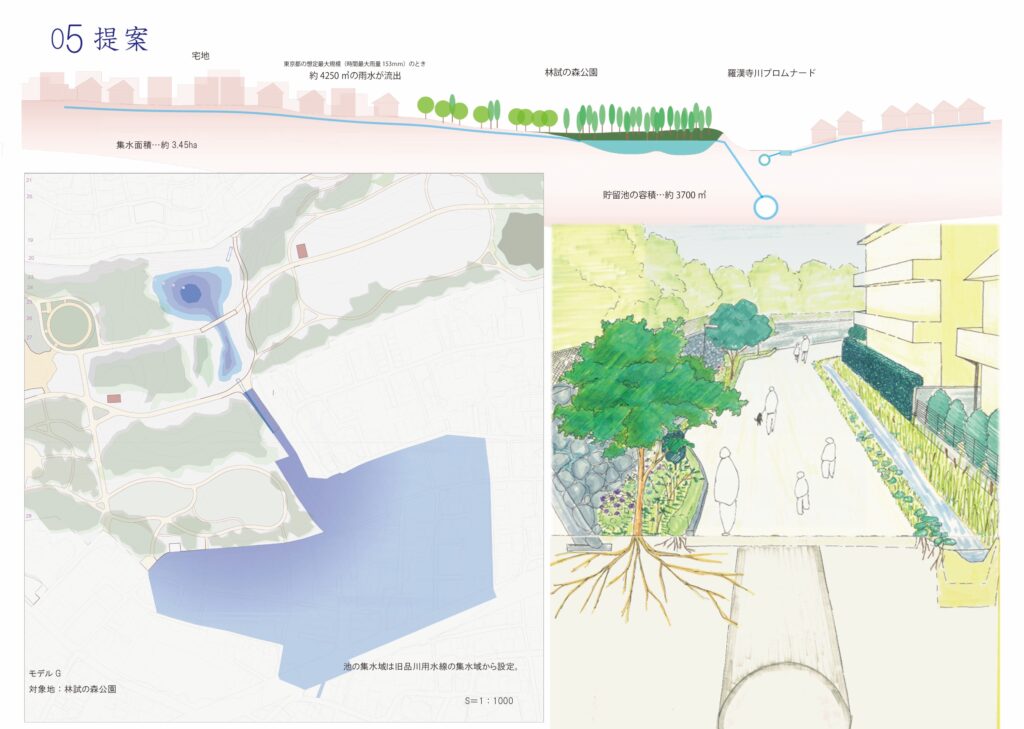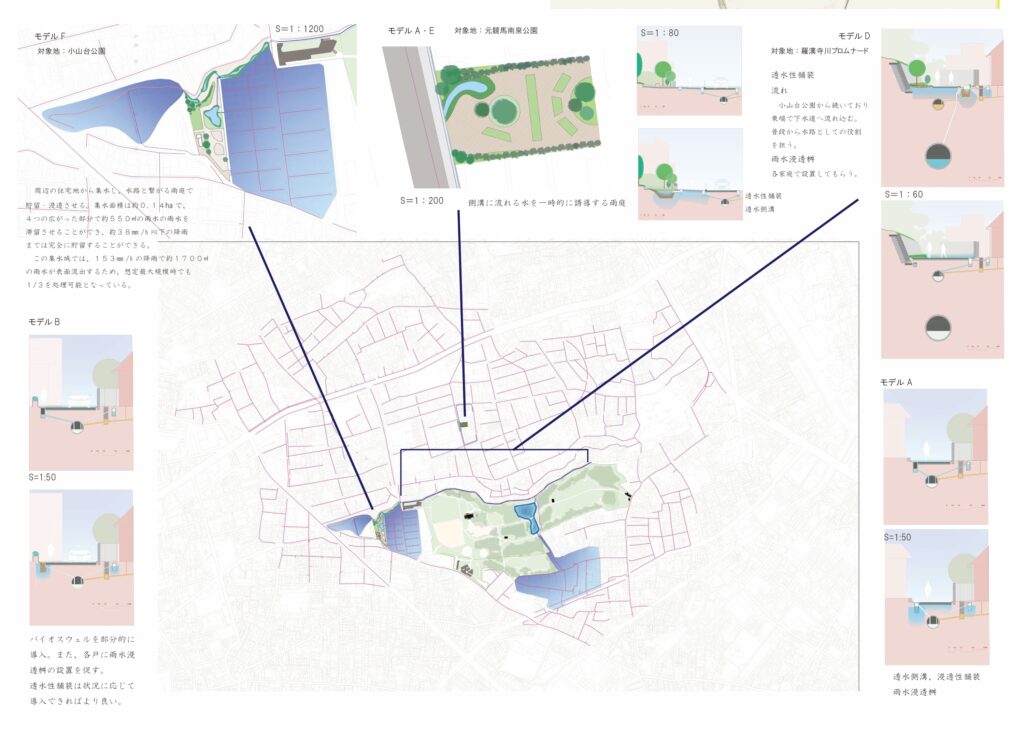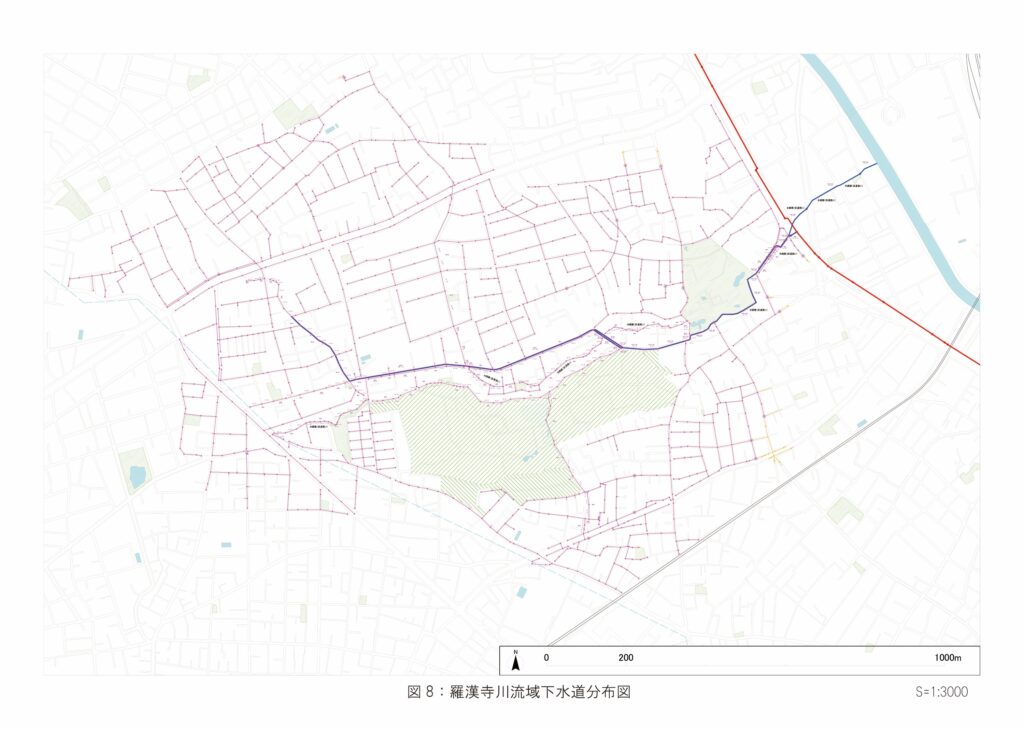旧河道の再編と水害リスク低減のための流域モデルの提案:旧羅漢寺川流域を対象として
猪野尾 ククル
Designing the Model for Realignment of Former River Channels and Flood Risk Reduction: A Case Study of the Rakanji River Basin
Kukuru Inoo
- JP
- EN
旧河道の再編と水害リスク低減のための流域モデルの提案:旧羅漢寺川流域を対象として
猪野尾 ククル
Designing the Model for Realignment of Former River Channels and Flood Risk Reduction: A Case Study of the Rakanji River Basin
Kukuru Inoo
東京都区部の殆どには合流式下水道が採用されているが、その構造に起因して、都市型洪水の発生や水質汚濁といった諸問題が助長されている。また、かつての都市化に伴う下水道・河川整備は、地域の水辺環境を犠牲にして進められた面がある。本制作では、旧河道に主要な下水道管が敷設されていることに着目して、下水道システムに依存しがちな水処理を、主に緑地を利用した浸透能の回復や雨水の貯留、道路など地上部の再編によって、流域単位で見直そうとしている。そして、都市域の水に関わる諸課題の根本的に改善していくとともに、地域の環境・文化を豊かにしていくことができるような提案を目指した。
The majority of areas in the 23 special wards of Tokyo utilize a combined sewer system. However, due to the inherent structure of this system, it exacerbates various issues, including urban flooding and water pollution. Furthermore, the historical development of sewer and river infrastructure during the process of urbanization often came at the expense of local waterfront environments. This study focuses on the fact that major sewer pipes are laid along former riverbeds, and seeks to reassess water management at the watershed scale by recovering infiltration capacity, utilizing rainwater storage, and reorganizing above-ground spaces such as roadways, primarily through the integration of green spaces. In doing so, the aim was to fundamentally improve the core water-related issues in urban areas while proposing solutions that would enrich the local environment and cultural landscape.




